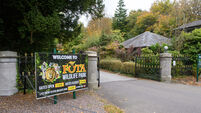Road traffic deaths ‘could fall below 200’
It also emerged yesterday that 38% of drivers in a sample study were found to have criminal records.
Chief Superintendent Aidan Reid of the Dublin Metropolitan Area made the comments at the launch of an initiative aimed at limiting the number of traffic collisions in the capital.













